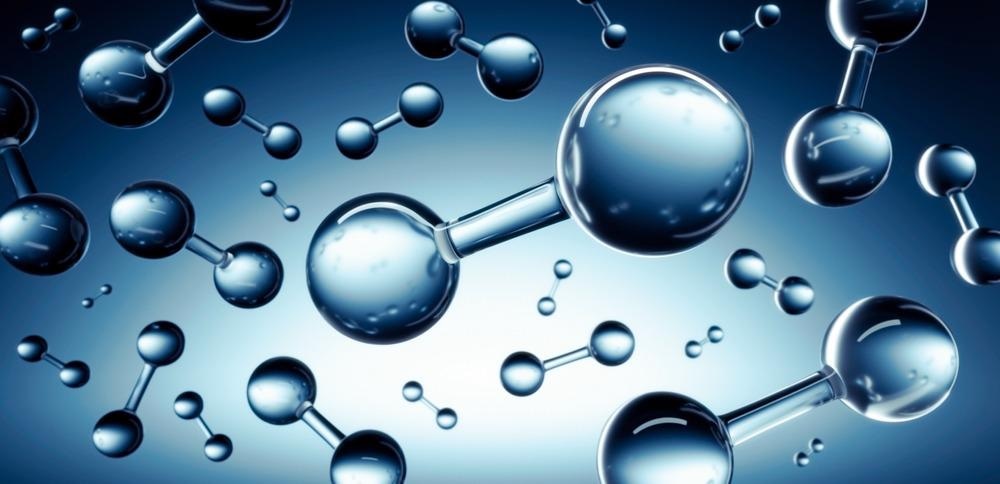In a recent study published in the International Journal of Hydrogen Energy, a team of researchers used nickel and zirconium oxide nanoparticles as catalysts to improve the storage capacity of magnesium hydride (MgH2).

Study: Remarkable catalytic effect of Ni and ZrO2 nanoparticles on the hydrogen sorption properties of MgH2. Image Credit: peterschreiber.media/Shutterstock.com
A high-energy ball-milling method using Ni and ZrO2 nanoparticles as additives were used to make the MgH2 nanoparticles. Different analytical techniques, such as scanning electron microscope (SEM) and X-ray diffraction technique (XRD), were utilized to analyze the materials' shape, crystalline structures, heat resistance, and H2 storage capabilities.
As a power source, hydrogen is a viable alternative to currently used fossil fuels, which are non-renewable and will eventually run out. The carbon emissions of these fossil fuels cause serious environmental problems such as pollution and global warming. Over the decades, a lot of effort has been made to figure out how to handle, store, and distribute hydrogen safely and efficiently.
Hydrogen Storage Using Magnesium Hydride
Magnesium hydride is a good choice for hydrogen storage due to its large occurrence, minimal environmental effect, relatively low cost, and high volumetric concentration. However, magnesium's practical applicability is restricted due to sluggish reaction rates and the high decomposition temperature (400 degrees Celsius) of the Mg-H system.
Various experimental techniques, including blending and mixing with complex oxidizing agents, have been employed to create more favorable reaction rates for magnesium and hydrogen. Decreasing the particle size of MgH2 using a high-energy ball milling method is quite beneficial in improving the hydrogen sorption rates compared to unmilled magnesium hydride.
During the ball milling process, various transition metals and their oxides (such as nickel and ZrO2) were used to achieve additional mechanical benefits and lower activation energies.
Catalytic Effect of Ni and ZrO2 Nanoparticles
Transition metals and their oxides are outstanding catalysts because they help to destabilize the Mg-H connection, which speeds up the hydrogenation and dehydrogenation rates of magnesium hydride. They are also abundant, inexpensive, and extremely good conductors.
Because of its high catalytic reactions, nickel has shown excellent potential for lowering dehydrogenation temperatures and improving hydrogen sorption rates. The strong affinity of Ni and Ni-based compounds for hydrogen, which aids in the weakening of the Mg-H interaction, is the major reason for their excellent catalytic properties.
Zirconium is a rare earth metal that can weaken the Mg-H link, making the dehydrogenation reaction simpler. ZrO2 can cause considerable grain structure, resulting in favorable desorption and absorption rates. The hydrogen storage capacity of a material may be considerably improved by utilizing these transition earth oxides as reactors in a ball milling method to create MgH2.
The rate of hydrogen adsorption in Mg-based composites usually increases with milling time. However, a lengthy milling time generally means higher operating costs and lowers the composites' viability as hydrogen storage components.
Research Methodology
In this study, magnesium hydride co-catalyzed by ZrO2 and Ni nanostructures were prepared using a high-energy ball-milling approach. The storage material was investigated for its composition, hydrogen adsorption rates, and thermodynamics.
Hydrogen absorption and desorption rates were improved without increasing milling time.
All specimen preparation was done in a controlled manner in an inert environment to avoid corrosion of the components. The study used 98% pure magnesium hydride, 99.9% pure nickel with a particle diameter between 20 nm and 100 nm, and 99.9% pure zirconium oxide with a particle diameter of 50 nm as raw resources.
Important Research Findings
The co-catalytic influences of nickel and zirconium oxide on the H2 storage characteristics of magnesium hydride were explored in this work. Based on the location of the peak intensity, there were no new phases discovered.
SEM pictures demonstrated good crystal defects and widely disseminated Ni and ZrO2 nanocrystals, resulting in favorable dynamics at temperatures lower than the usual operating temperatures of MgH2.
The activation energy of the material was reduced by 55%, and the desorption temperature was also significantly decreased. The maximum temperature of the MgH2 specimen catalyzed by Ni and ZrO2 nanoparticles was decreased by 57.2 degrees Celsius.
From the findings, it can be concluded that using Ni and ZrO2 nanoparticles to co-catalyze the manufacture of magnesium hydride material improves its hydrogen storage, which has a wide range of applications in clean energy generation.
Continue reading: The Production of Green Hydrogen Using Nanoparticles.
Reference
Tome, K. C. et al. (2021). Remarkable catalytic effect of Ni and ZrO2 nanoparticles on the hydrogen sorption properties of MgH2. International Journal of Hydrogen Energy. Available at: https://www.sciencedirect.com/science/article/abs/pii/S0360319921044906
Disclaimer: The views expressed here are those of the author expressed in their private capacity and do not necessarily represent the views of AZoM.com Limited T/A AZoNetwork the owner and operator of this website. This disclaimer forms part of the Terms and conditions of use of this website.